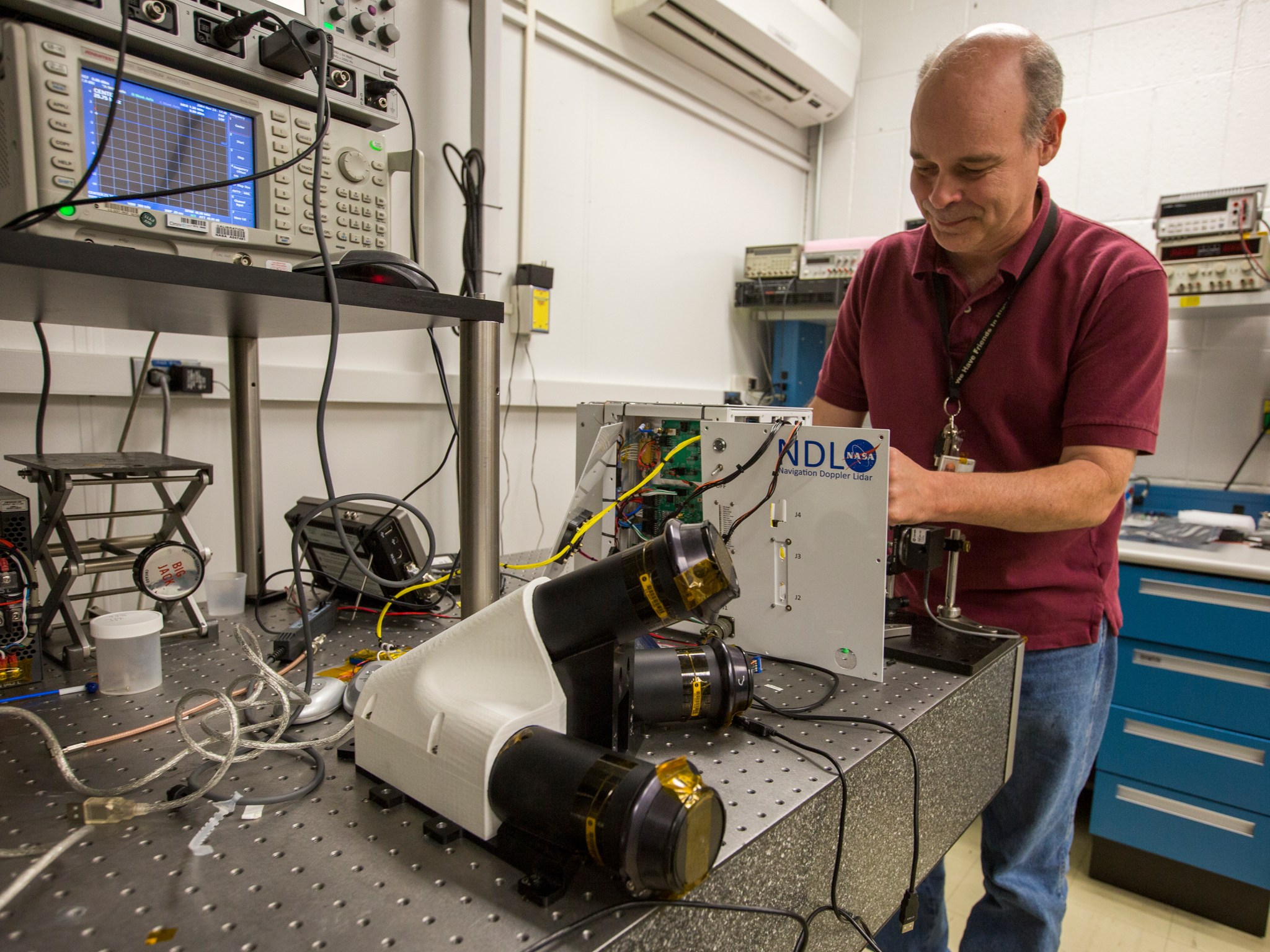NASA’s bold exploration objectives require cutting-edge technology, often in the form of new inventions created by agency personnel. NASA has recognized three new technologies for the 2022 Invention and Software of the Year awards. These technologies support the exploration of other worlds and NASA’s objective to widely share its advances.
“NASA’s world-class workforce enables us to pursue innovation to enhance America’s leadership in space and yield tangible benefits here on Earth,” said Dr. Bhavya Lal, NASA associate administrator for Technology, Policy and Strategy. “This year, we recognize teams that will improve spacecraft material, enable more precise landings as we prepare to travel to the Moon and Mars, and help share our technologies to ensure they have the greatest impact possible. I’m grateful to these teams for their inspired work and dedication.”
Studying Spacecraft Materials at a Micro Scale
For decades, doctors have used CT scans – a series of X-ray images – to locate and assess injuries inside the brain and body. More recently, NASA’s Ames Research Center in California’s Silicon Valley has utilized CT imaging for an otherworldly application: Researchers have applied this technology to study how spacecraft are structurally and materially impacted by the extreme temperatures and aerodynamic forces of atmospheric entry when preparing to touchdown on a planet’s surface.
Porous Microstructure Analysis (PuMA) – an open-source software package developed by researchers at NASA Ames – uses micro-CT imaging to assess on a miniscule scale how heat and pressure can affect the lightweight composite structures designed to protect a vehicle during entry, descent, and landing. Material behavior at the microscale is important to generate a physics-based understanding of material performance, empowering engineers to design systems with higher reliability. Looking beyond thermal protection materials, PuMA’s development team has also made significant advancements that enable PuMA to analyze a wide array of materials like parachutes, batteries, and meteorites.
PuMA is the 2022 Software of the Year winner. It was developed under the NASA Entry Systems Modeling project, which is funded by the Game Changing Development Program within NASA’s Space Technology Mission Directorate (STMD).
Making Landings Safer, More Precise
On Earth, GPS is used every day for navigating cars and planes. But in space where GPS is not available, a new laser-based technology has been developed to safely and precisely navigate astronauts to their destinations on the surfaces of other worlds. Navigation Doppler Lidar (NDL), developed with support from STMD at NASA’s Langley Research Center in Hampton, Virginia, determines a spacecraft’s exact velocity and position to softly land at the desired location on planetary surfaces. The technology uses lidar (light detection and ranging), which is a remote sensing method using lasers.
Two NDL units will fly on upcoming Commercial Lunar Payload Services lander flights. Invented at Langley, NDL is also part of the Safe & Precise Landing – Integrated Capabilities Evolution (SPLICE) project, which is led by NASA’s Johnson Space Center to develop, demonstrate, and infuse precision landing and hazard avoidance technologies for NASA and for potential commercial spaceflight missions.
NDL is the 2022 Invention of the Year in the commercial category, which recognizes a NASA technology that has been licensed and has resulted in commercial sales. NDL has been licensed to several companies, including Psionic in Hampton, Virginia. Psionic is customizing NDL for use in both terrestrial and space applications.
Sharing NASA’s Innovations
The NASA Technology Transfer System (NTTS) is an enterprise software tool developed in-house for STMD’s Technology Transfer Program, which aims to find the widest possible applications for NASA technology through partnerships and licensing agreements with industry, academia, and other U.S. governmental agencies.
NTTS contains over 60,000 technologies supporting all ten NASA field centers and Headquarters. The tool provides a comprehensive suite of data systems, web-enabled applications, and infrastructure for both NASA personnel and external users from private companies, academia, and other federal, state, and local government agencies to request technology licenses from NASA. It facilitates and streamlines the entire technology transfer process, including the reporting of new technologies, protecting intellectual property, and commercializing technologies through various technology licenses, software releases, spinoffs, partnerships, and success stories.
NTTS is the 2022 Invention of the Year winner in the government category. NTTS has enabled NASA to execute more technology license agreements than ever before, breaking the agency’s annual record with 211 licenses executed in 2021. More licenses mean more opportunities for commercial products or services to be created in the forms of spinoffs that help protect the planet, create jobs, boost the economy, and even save lives NTTS has been transferred via software usage agreements to 11 U.S. federal agencies.
About NASA’s Invention and Software of the Year Awards
NASA’s Invention of the Year and Software of the Year awards recognize the best innovations developed by various teams across NASA. The Inventions and Contributions Board evaluates the nominations (for the software award a panel of software experts provide the Board with input), and winners are selected and recommended to the Administrator for approval.
The Invention of the Year awards are sponsored by NASA’s Office of the General Counsel. The Software of the Year award is sponsored by offices of the Chief Engineer, Safety and Mission Assurance, and Chief Information Officer. The Inventions and Contributions Board is managed by NASA’s Office of the General Counsel with support from the agency’s Office of Technology, Policy, and Strategy.
Media contact:
Sarah Frazier



























